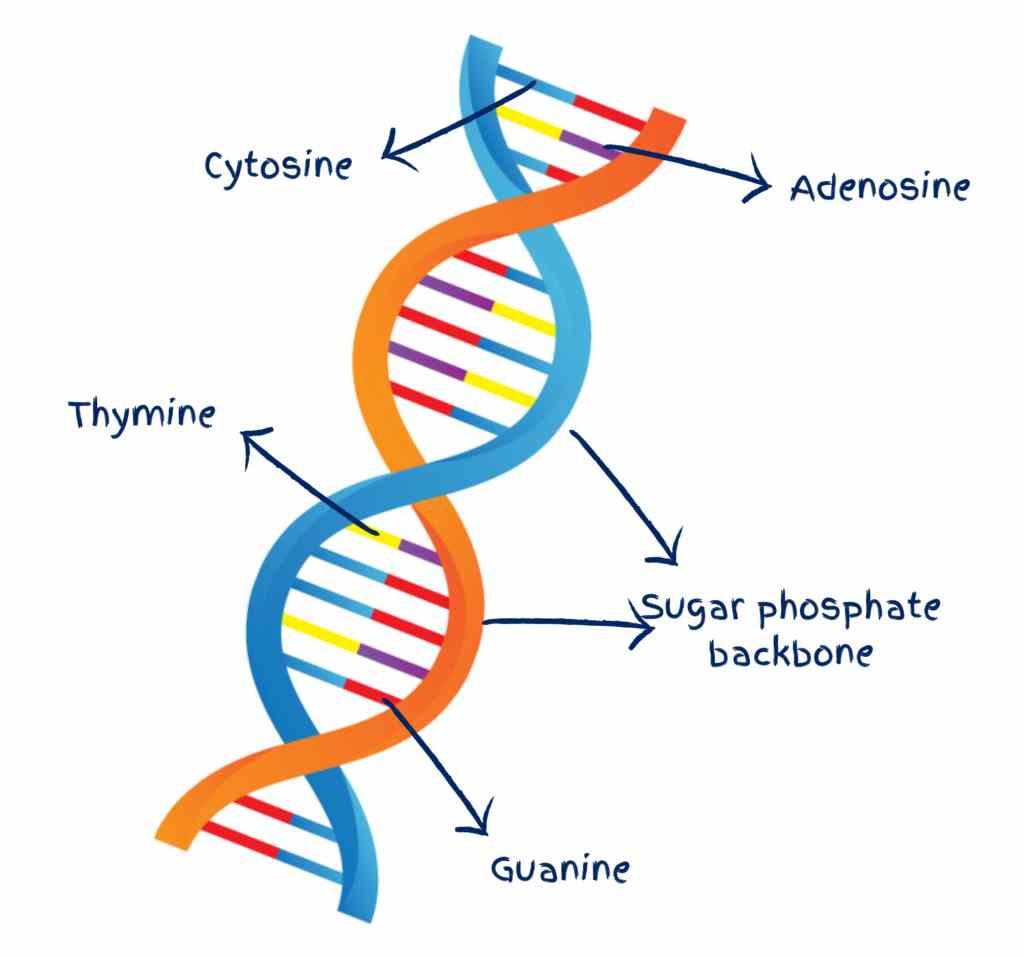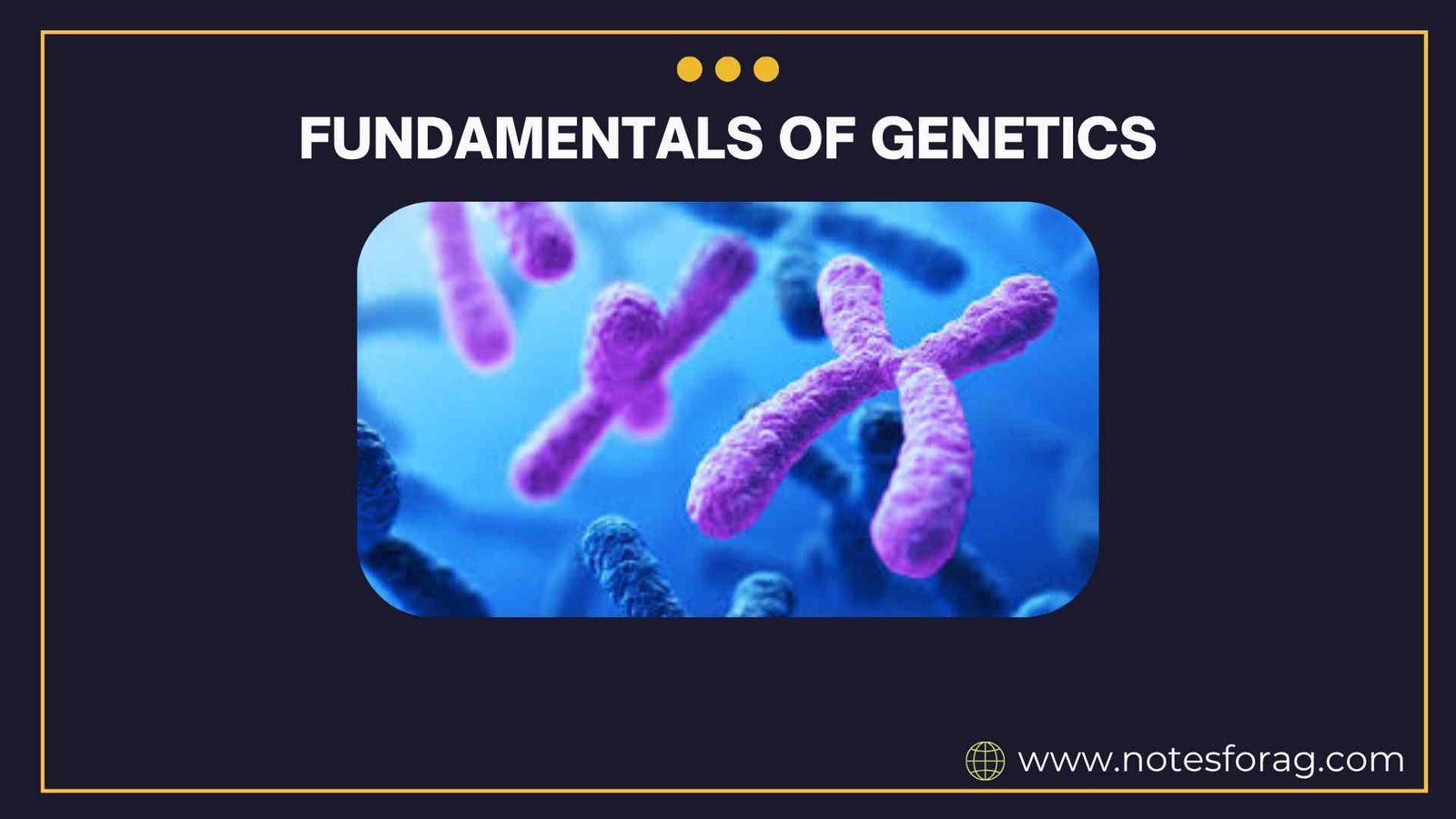1 Introduction to Genetics
Genetics is the branch of biology that studies how traits and characteristics are passed from one generation to the next. It explains why offspring look like their parents and how living organisms inherit physical and behavioral traits. Genetics is essential for understanding heredity, evolution, and how living things function at the cellular level. It also plays a significant role in medicine, agriculture, and biotechnology.

Summary of Genetics
- Genetics helps us understand how traits are passed from parents to offspring, explaining why each living thing is unique.
- The study of genetics has led to life-changing technologies like genetic engineering, gene therapy, and DNA fingerprinting, which improve health, agriculture, and conservation.
- Understanding genetics is essential for making better decisions about our health, protecting the environment, and shaping the future of humanity.
Table of Contents
2. Historical Background of Genetics
2.1 Early Theories of Inheritance
Before modern genetics, people had many ideas about how traits were passed on. Theories like “blending inheritance” suggested that offspring were just a mix of their parents’ traits. But this idea could not explain why some traits disappear and then reappear in future generations.
2.2 Gregor Mendel’s Contribution
Gregor Mendel, known as the Father of Genetics, performed experiments on pea plants. He discovered that traits are inherited in predictable patterns. Mendel’s work introduced the basic principles of inheritance: dominance, segregation, and independent assortment.
2.3 Modern Genetics
With the discovery of DNA in the 20th century, genetics advanced rapidly. Scientists learned that DNA carries genetic information in the form of genes. Modern genetics now includes DNA technology, genetic engineering, and genome sequencing.
3. Basic Concepts of Genetics
3.1 Genes
Genes are the basic units of heredity. They are made of DNA and carry instructions that determine an organism’s traits. Each gene controls a specific characteristic, such as eye color or blood type.
3.2 DNA (Deoxyribonucleic Acid)

DNA is a molecule that holds genetic information. It is shaped like a double helix, resembling a twisted ladder. DNA is found in the nucleus of cells and is passed from parents to offspring.
3.3 Chromosomes

Chromosomes are structures that organize DNA. Humans have 46 chromosomes, arranged in 23 pairs. Each parent contributes one chromosome to each pair. Chromosomes ensure DNA is accurately copied and passed during cell division.
3.4 Alleles
Alleles are different forms of a gene. For example, the gene for eye color may have a blue allele and a brown allele. Alleles determine variations in inherited traits.
4. Mendelian Genetics
Mendelian Genetics refers to inheritance patterns based on Gregor Mendel’s principles,
4.1 Mendel’s Laws of Inheritance
Mendel’s Laws of Inheritance, which explain how traits are passed through dominant, segregating, and independently assorting genes
4.1.1 Law of Dominance
Some traits are dominant, meaning they show up even if only one copy of the gene is present. Recessive traits appear only when two copies of the gene are inherited.
4.1.2 Law of Segregation
Each individual has two copies of each gene but passes only one to their offspring. Genes separate (segregate) during the formation of reproductive cells (gametes).
4.1.3 Law of Independent Assortment
Genes for different traits are passed independently of each other. This explains why combinations of traits can vary widely among offspring.
4.2 Monohybrid and Dihybrid Crosses
4.2.1 Monohybrid Cross
A monohybrid cross studies one trait at a time. For example, crossing pea plants with green seeds and yellow seeds to observe which color appears in the next generation.
4.2.2 Dihybrid Cross
A dihybrid cross studies two traits at the same time, like seed color and seed shape. It shows how multiple traits are inherited together.
5. Extensions of Mendelian Genetics
5.1 Incomplete Dominance
In incomplete dominance, neither allele is completely dominant. The offspring show a blend of both traits. For example, red and white flowers may produce pink flowers.
5.2 Codominance
In codominance, both alleles are fully expressed. An example is the AB blood type, where both A and B antigens are present.
5.3 Multiple Alleles
Some genes have more than two possible alleles. For instance, the gene for blood type has three alleles: A, B, and O.
5.4 Polygenic Inheritance
Polygenic inheritance involves multiple genes affecting a single trait. Traits like height, skin color, and weight are controlled by several genes working together.
6. DNA Structure and Function
6.1 Structure of DNA
DNA is made up of four chemical bases: adenine (A), thymine (T), cytosine (C), and guanine (G). These bases pair in specific ways: A with T, and C with G. The DNA strands form a double helix structure.
6.2 DNA Replication
DNA replication is the process by which DNA makes copies of itself. This ensures that each new cell has the same genetic information as the parent cell.
6.3 Gene Expression
Gene expression is the process by which information from a gene is used to make proteins. Proteins determine the structure and function of cells and organisms.
7. Chromosomes and Cell Division
7.1 Mitosis
Mitosis is a type of cell division that produces two identical daughter cells. It is responsible for growth, tissue repair, and asexual reproduction.
7.2 Meiosis
Meiosis is a special type of cell division that reduces the chromosome number by half. It produces gametes (sperm and eggs) for sexual reproduction.
7.3 Chromosomal Abnormalities
Sometimes, errors in meiosis or mitosis can lead to chromosomal abnormalities, such as Down syndrome (an extra chromosome 21). These abnormalities can cause developmental and health problems.
8. Genetic Inheritance Patterns
8.1 Autosomal Dominant Inheritance
A trait controlled by a dominant gene on a non-sex chromosome. The trait appears if at least one dominant allele is present. Example: Huntington’s disease.
8.2 Autosomal Recessive Inheritance
A trait appears only when two recessive alleles are inherited. Carriers have one copy of the gene but do not show the trait. Example: Cystic fibrosis.
8.3 X-Linked Inheritance
Traits controlled by genes on the X chromosome. These traits often affect males more than females because males have only one X chromosome. Example: Hemophilia.
9. Genetic Mutations
9.1 Types of Mutations
The types of Mutations are
9.1.1 Point Mutations
A single base change in the DNA sequence, which may affect the protein made.
9.1.2 Insertion and Deletion Mutations
Adding or removing DNA bases can disrupt the reading frame of a gene, leading to defective proteins.
9.2 Causes of Mutations
Mutations can occur naturally or be caused by external factors like radiation, chemicals, and viruses.
9.3 Effects of Mutations
Some mutations cause genetic diseases, others may have no effect, and some may even provide advantages that contribute to evolution.
10. Modern Applications of Genetics
10.1 Genetic Engineering
Genetic engineering involves changing the DNA of an organism to add desired traits, like making crops pest-resistant.
10.2 Gene Therapy
Gene therapy aims to treat genetic diseases by inserting healthy genes into a patient’s cells.
10.3 DNA Fingerprinting
A technique used in forensic science to identify individuals based on their unique DNA patterns.
10.4 Human Genome Project
An international effort to map all the genes in the human genome, helping scientists understand genetic diseases and human evolution.
11. Conclusion
Genetics is a fascinating field that helps us understand how life is passed from one generation to another. It explains why we look like our parents, why we have certain traits, and why we are all unique. From the basic principles discovered by Gregor Mendel to the complex modern studies of DNA, genetics has given us powerful tools to explore life at its smallest levels.
Understanding genetics is important not just for scientists but for everyone. It helps doctors diagnose and treat genetic diseases, allows farmers to grow better crops, and supports efforts to save endangered species. Genetics has introduced amazing technologies like genetic engineering and gene therapy, which have the potential to cure diseases and improve the quality of life for many people.
Learning about genes, DNA, chromosomes, and how they work together helps us appreciate how carefully life is designed. It also teaches us that changes in our DNA, known as mutations, can lead to both health problems and positive adaptations that help species survive. This balance is what drives evolution and diversity in the natural world.
Today, genetics is more important than ever. With the help of modern tools like DNA fingerprinting and the Human Genome Project, we can now explore our genetic information in ways that were not possible before. These discoveries not only answer questions about where we come from but also give us new ways to improve medicine, agriculture, and environmental conservation.
In simple words, genetics is the story of life written in DNA. It connects the past, shapes the present, and holds the key to the future. By understanding genetics, we can make smarter choices about health, the environment, and the way we live. It’s a powerful science that affects us all, whether we realize it or not.
Frequently Asked Questions (FAQs)
What is genetics and why does it matter?
Genetics is the study of how traits like eye color, height, and even health conditions are passed from parents to their children. It matters because understanding genes helps us treat diseases, improve crops, and protect wildlife. Genetic changes (mutations) can cause illness or help species adapt and survive
How do genes work inside our body?
Genes are segments of DNA packed inside chromosomes. When cells divide, DNA is copied and passed on, ensuring each new cell has the necessary instructions. This process follows Mendel’s principles of inheritance .
Why is my family health history important?
Your family’s medical history helps doctors spot patterns that might point to inherited diseases like diabetes, heart conditions, or cancer. Knowing this early can guide preventive care, screenings, and testing.
Related Articles

